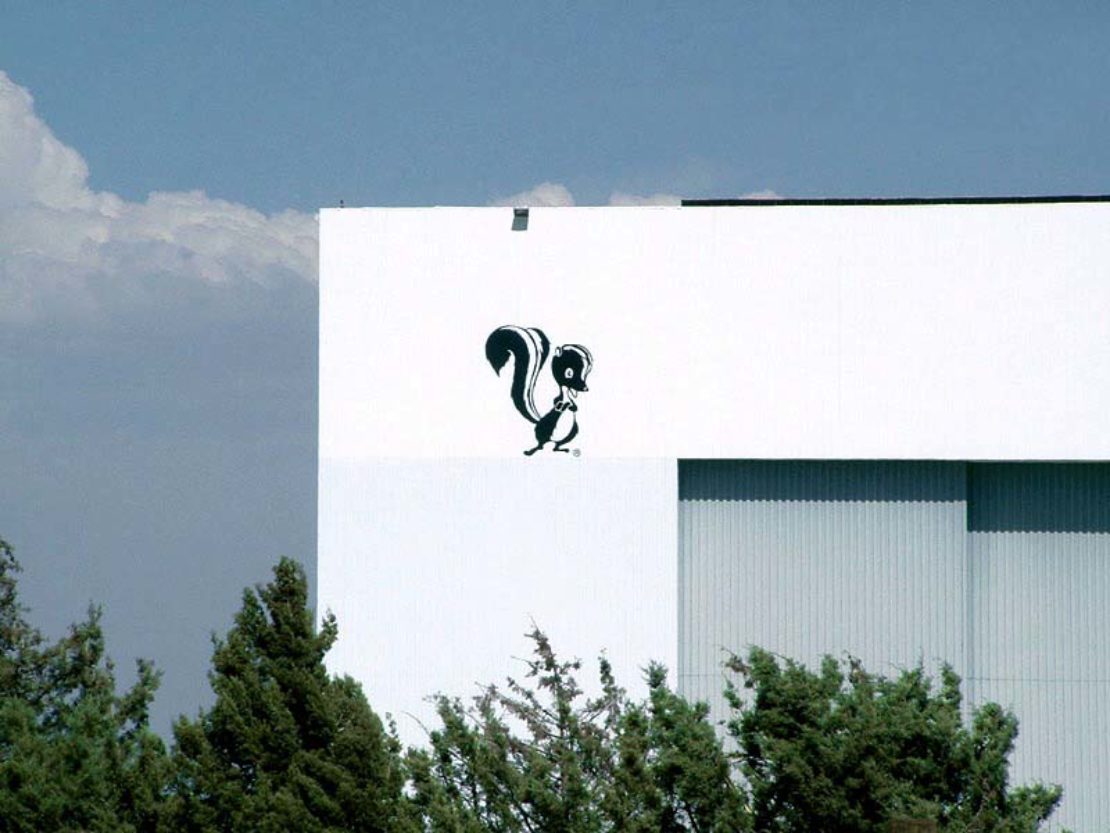
Learn the Skunk Works way
Origins
In 1943, celebrated plane designer Clarence L ‘Kelly’ Johnson was co-opted by Lockheed, in Burbank, California, to develop a jet fighter to take on the Luftwaffe. Johnson said it would only be possible if he could run his own team, away from the corporate oversight and by-the-book busybodies who would get in the way. Lockheed agreed, and Johnson selected 23 engineers and a further 30 staff, and built a make-do lab from discarded engine boxes, roofed with a circus tent, in a quiet nook of the Lockheed campus.
“We’ll build it in 180 days,” Johnson told the War Department. It was a ludicrous target, plucked from nowhere, but his team would go on to build the jet, the P-80 Shooting Star, from scratch – everything from materials, fuel and paints to the design and manufacturing techniques – and deliver a prototype 37 days ahead of deadline.
"Be quick, be quiet, be on time"
As much as Johnson was a renowned designer, he was also revered as a talented leader and manager – albeit one with a furious temper. He ran an authoritarian ship, with his team working with total focus to murderously demanding deadlines.
Explore
Reassemble and make it newThe operation was so secret that even those involved didn’t quite know what they were doing. Only a core five were aware that they were working on a jet-propelled plane, so the story goes. The lab had no secretaries or cleaners, and the foul-smelling plastics factory next door kept away curious passers-by (and, reminding employees of a cartoon strip featuring Skonk Works, a factory cooking up noxious moonshine, inspired the lab’s nickname).
Johnson – whose motto was “Be quick, be quiet, be on time” – soon codified 14 operating rules for the lab to live by, including, number one:
“The Skunk Works manager must be delegated practically complete control of his programme in all respects.”
And:
“The number of people having any connection with the project must be restricted in an almost vicious manner.”
The rules are still in use at the lab today.
Lab life
Unlike other modern-day labs striving desperately to engineer an environment perfectly conducive to creative work and ‘disruptive’ enterprise, Skunk Works was a chaotic mess in a dreary, windowless space. According to Ben Rich, Johnson’s successor, it was “about as cheery as a bomb shelter.” The team, so focussed on their task, cared little about their surroundings.
Legacy
As the story of the lab became famous, ‘skunk works’ has, since the 70s, become the generic term for small, nimble teams operating at a remove from an organisation’s primary business, with a specific remit to innovate, experiment and take risks. Skunk Works became the template for rapid, radical innovation.
Skunk Works continued to produce radically ambitious planes, including the US’s first supersonic fighter jet and the U2, and developed modern stealth technology. More recently: who knows? The lab remains a secret division for ambitious projects, continuing as an institutionalised part of Lockheed, now Lockheed Martin, at a US Air Force plant in Palmdale, California (one of its hangars is pictured above). Much of the old building was demolished for parking spaces.